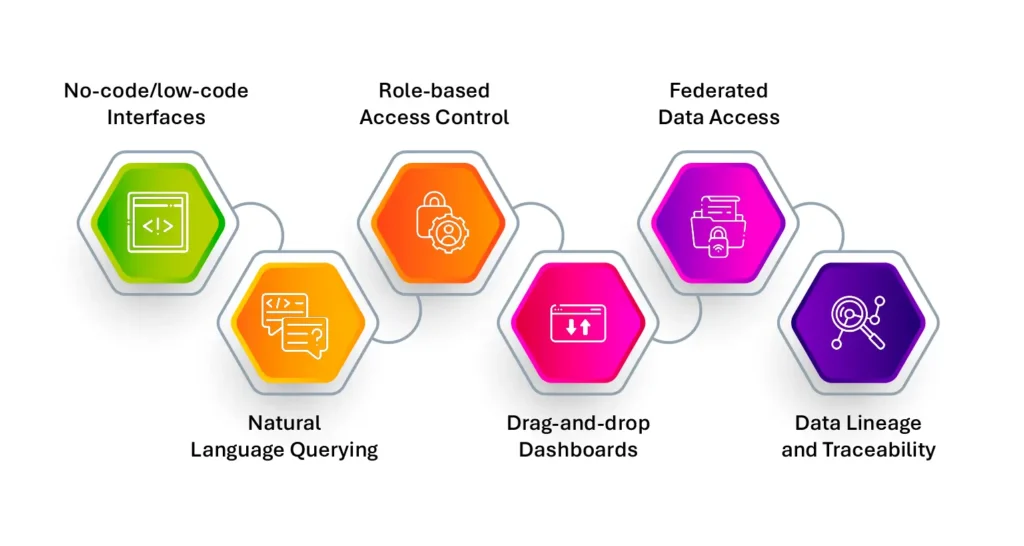Self-Service Analytics refers to the practice of enabling non-technical business users—such as marketers, product managers, financial analysts, and operations leads—to independently access, analyze, and visualize enterprise data without relying on IT or data science teams. It marks a significant shift from centralized data gatekeeping to decentralized decision intelligence.
Why It Matters in 2025
In a world where business decisions must be made in real time, data democratization has become a competitive differentiator. Traditional analytics models—where users submit requests to IT and wait days or weeks for insights—simply can’t keep up.
Today:
- More than 70% of business experts experience data access delays exceeding a day, hindering timely decision-making.
- According to a TDWI research study, 74% of organizations reported that fewer than 40% of their users actively leverage self-service analytics tools.
Self-service analytics flips the model. It puts the power of insight generation directly into the hands of those closest to the business problem—cutting down latency and boosting agility.
Core Capabilities

Modern self-service data analytics platforms go far beyond static dashboards. Key features include:
- No-code/low-code interfaces that simplify analysis for business users
- Natural language querying (NLQ) for conversational data exploration
- Role-based access control to ensure governance and security at scale
- Drag-and-drop dashboards for custom visualizations
- Federated data access to pull insights across hybrid and multi-cloud environments
- Data lineage and traceability to understand where data comes from and how it’s used
This combination allows organizations to scale insight generation without scaling headcount or complexity.
Challenges Organizations Face
Despite the promise, self-service analytics isn’t a plug-and-play solution. Key hurdles include:
- Data quality issues that lead to misinterpretation or flawed insights
- Shadow analytics, where unmanaged tools create risks of inconsistency and non-compliance
- Data silos across departments that hinder holistic analysis
- Limited data literacy among business users, resulting in misuse or underuse of tools
These risks are particularly critical when dealing with unstructured data, which lacks the schema-based structure traditional BI tools are built for.
Why Self-Service Analytics Must Be Governed
Unfettered access without guardrails leads to risk. That’s why the next generation of self-service tools is being built with governance by design:
- Automated data classification to restrict access to sensitive information
- Embedded compliance controls (e.g., GDPR, HIPAA, DPDP)
- Centralized audit trails to track who accessed what, when, and why
- Anomaly detection to flag unusual user behavior or risky analysis patterns
These guardrails ensure that as insight velocity increases, data integrity, privacy, and security don’t get left behind.
Future Trends
The future of self-service analytics is both smarter and more responsible:
- AI-powered augmentation: Tools that suggest insights, highlight anomalies, and guide decisions
- Real-time analytics: Moving from historical reports to live dashboards with streaming data
- Integrated explainability: Users won’t just see the “what”—they’ll understand the “why”
- Cross-functional collaboration: Embedding analytics into workflows like CRM, ERP, and supply chain platforms
- Self-service for unstructured data: Empowering users to query emails, PDFs, voice recordings, and more using intelligent discovery
Self-service data analytics is more than a convenience—it’s the operating model of the data-first enterprise. It breaks the bottleneck between data and decisions, empowering every employee to act with intelligence. But empowerment without responsibility is chaos. That’s why organizations must pair access with oversight—creating environments where insights are fast, flexible, and fully governed.
In a world defined by speed and data, the winners won’t be those with the most dashboards—they’ll be those with the most actionable, accurate, and accessible insights in the moment they matter most.
Getting Started with Data Dynamics:
- Read the latest blog: The Trust Equation: How Self-Service Data Management Builds Trust and Enables Better Decisions
- Learn about our Unstructured Data Management Software – Zubin
- Schedule a demo with our team






